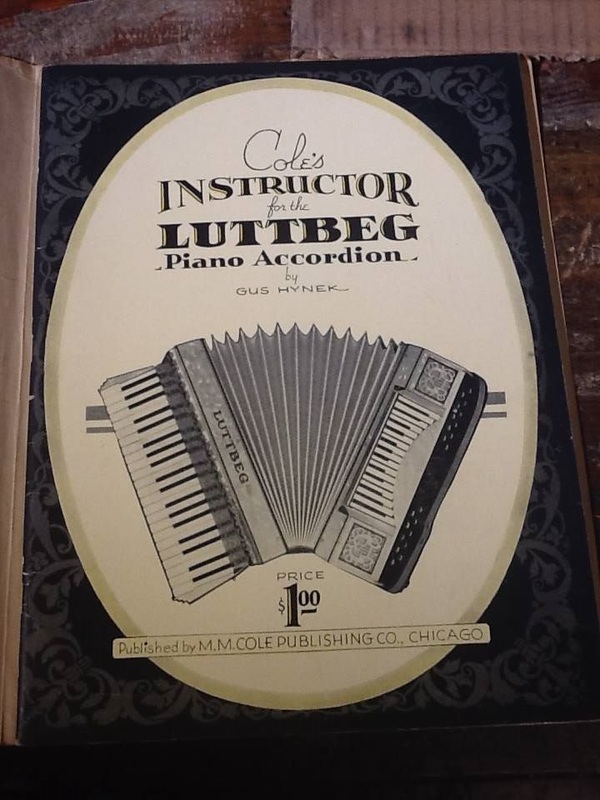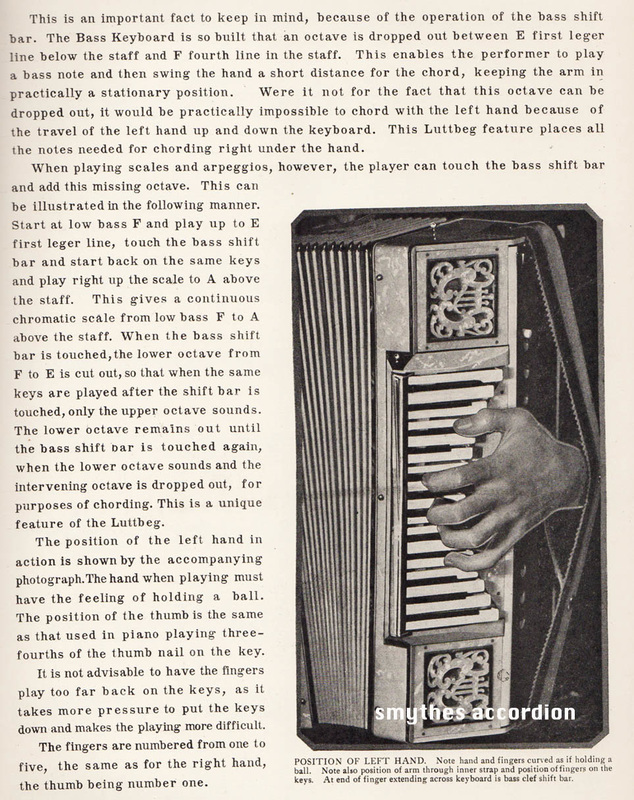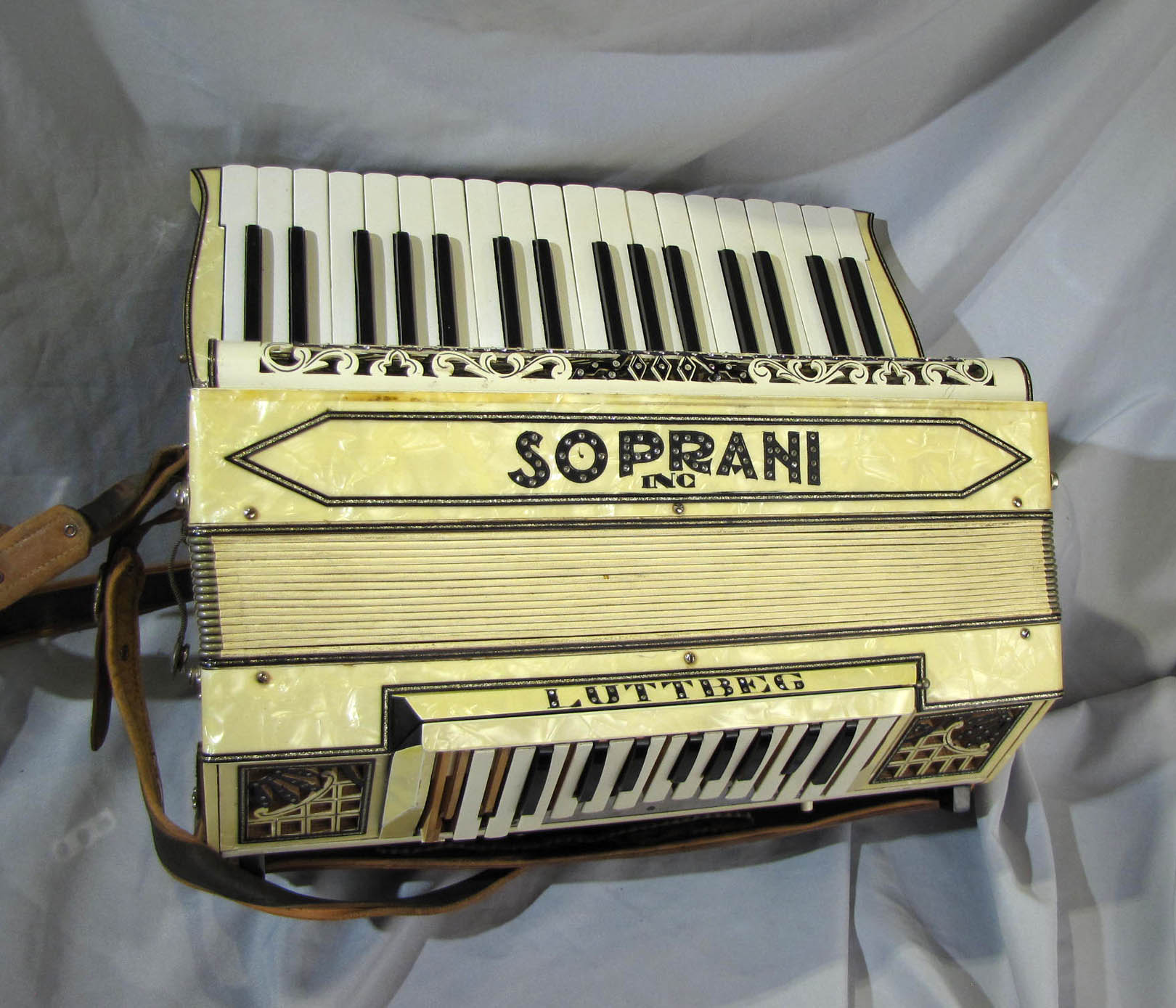Tips on cleaning your accordion.
There are things you can do at home to take care of your instrument and keep it looking nice.
There are also some things you DO NOT want to do.
Do not use solvents like GooGone, alcohol ,acetone or paint thinner to remove tape or sticker residue, you will dissolve the finish of the accordion.
Removing small scratches and haze.
Small scratches and haze can be removed using automotive polishing compound ,or rubbing compound for deeper scratches.
Put some compound on a soft cloth like a old t shirt and work it into the cloth, use this with some pressure to rub out the scratch with a circular motion. Do not apply the compound directly to the accordion as it will get in all the cracks and joints and will be hard to clean out.
Use another clean section of the rag to clean the polished area. Use the rubbing compound for deeper scratches and the polishing compound for finer ones.
It also works well for aluminum trim and chrome as long as the chrome is not flaking (it will come off in this case.
The polishing compound does a good job of cleaning as well but things like food and the like are best removed before polishing by using a damp rag with something like windex or mild soap first.
You can use lighter fluid (zippo type), mineral spirits or kerosene to remove tape or sticker residue, dab a little on the residue and give it a few min to soften the tape, use your fingernail or a piece of wood to scrape off the residue and use a rag to clean it off, it may take a couple of applications to get it all.
Bellows tape edges can be cleaned with a damp soapy rag , but be careful to not get it actually wet.
Inner bellows folds should be cleaned with a stiff brush, or with a air chuck hooked to a air compressor with no more than 50 psi. This works really well to get dust out of the inner folds in the bellows.
Keys can be cleaned with a damp rag and then polished like celluloid.
Care should be taken with white pearl accordions since the pearl finish is a thin layer over a solid white finish, corners and edges tend to get more wear and the pearl can get worn off exposing the solid white underneath. This can be fixed but is complicated. Be careful when polishing these areas.
Vacuum out the case from time to time, things like pet hair and dirt in the case can easily end up inside the accordion and clog reeds.
There are things you can do at home to take care of your instrument and keep it looking nice.
There are also some things you DO NOT want to do.
Do not use solvents like GooGone, alcohol ,acetone or paint thinner to remove tape or sticker residue, you will dissolve the finish of the accordion.
Removing small scratches and haze.
Small scratches and haze can be removed using automotive polishing compound ,or rubbing compound for deeper scratches.
Put some compound on a soft cloth like a old t shirt and work it into the cloth, use this with some pressure to rub out the scratch with a circular motion. Do not apply the compound directly to the accordion as it will get in all the cracks and joints and will be hard to clean out.
Use another clean section of the rag to clean the polished area. Use the rubbing compound for deeper scratches and the polishing compound for finer ones.
It also works well for aluminum trim and chrome as long as the chrome is not flaking (it will come off in this case.
The polishing compound does a good job of cleaning as well but things like food and the like are best removed before polishing by using a damp rag with something like windex or mild soap first.
You can use lighter fluid (zippo type), mineral spirits or kerosene to remove tape or sticker residue, dab a little on the residue and give it a few min to soften the tape, use your fingernail or a piece of wood to scrape off the residue and use a rag to clean it off, it may take a couple of applications to get it all.
Bellows tape edges can be cleaned with a damp soapy rag , but be careful to not get it actually wet.
Inner bellows folds should be cleaned with a stiff brush, or with a air chuck hooked to a air compressor with no more than 50 psi. This works really well to get dust out of the inner folds in the bellows.
Keys can be cleaned with a damp rag and then polished like celluloid.
Care should be taken with white pearl accordions since the pearl finish is a thin layer over a solid white finish, corners and edges tend to get more wear and the pearl can get worn off exposing the solid white underneath. This can be fixed but is complicated. Be careful when polishing these areas.
Vacuum out the case from time to time, things like pet hair and dirt in the case can easily end up inside the accordion and clog reeds.



 RSS Feed
RSS Feed